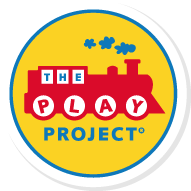By Ashley Case, OTR/L
A Social Story can be a great way to help children process through a significant issue, event, or experience. Social Stories are appropriate for all children who demonstrate skills through Functional Developmental Level 5 (creating and elaborating ideas). It is at this point, beginning around 24-30 months, that children are able to understand the meaning and message of a simple story. The idea behind using Social Stories to address social and emotional difficulties is that children will be able to relate to and therefore learn from the character in the story, thus allowing the adult to address the issue, event, or experience in a positive or constructive way. Carol Gray, developer of Social Story strategies, provides additional information and tips on her website: http://www.thegraycenter.org/social-stories.
The following Social Story was developed for a 7 year old boy who has a younger brother on the autism spectrum. I composed this story to offer the older brother some comfort and support during a time when he was struggling to connect with his younger brother
Once there was a lizard named Rex who had a little brother with Autism. His brother’s name was Ty. Ty didn’t talk much and he didn’t play with Rex like other brothers did. He sometimes broke Rex’s toys or knocked down towers that he built. Sometimes Ty would throw things or yell for no reason. Sometimes Ty didn’t make any sense at all.
Rex felt sad and frustrated because he wanted his brother to be more like him. He wanted Ty to talk and to build things with him. He wanted his brother to sit on the couch and watch TV with him or to play catch outside. Rex tried everything to make his brother play with him, but nothing seemed to work. . . Sometimes, Rex even wished for a different brother, which made his mom feel sad because she loves Rex and Ty both so much.
Rex’s Mom explained that Ty can’t talk like Rex yet which means that Rex needed to find different ways to talk or play with him. For example, Ty might look at something or touch it instead of pointing or saying: “look at this!” Rex decided to start pointing more and leading Ty by the hand instead of telling him what to do or where to go. To Rex’s surprise, this worked and Ty began to follow him!
One day, Rex was frustrated because Ty was ignoring him. Rex’s Mom suggested that Rex do some of the things that Ty likes to do such as jumping, running around, singing, or rough housing. When Rex did this, Ty started to laugh and play with Rex. Once Rex stopped trying to make Ty play his way and instead did the things he knew Ty liked, Rex realized that he could have a lot of fun with his brother.
Rex still gets frustrated sometimes, but he learned to have fun doing the things that he and Ty can do together. Now, Rex and Ty have lots of favorite games. Some of their favorites include: chase, blowing bubbles, hiding under blankets and then saying: boo!, playing with cars, jumping on the trampoline, and even building towers together. Rex’s Mom is so proud of Rex and Ty!

